
Hello Hive community, I hope you are very well, today I have been quite nostalgic for a country that I adore and that I really miss a lot since I left. I always say that a piece of my heart stayed in this part of the world.
Colombia is one of those countries that leaves you breathless at every kilometer, it has large stretches of land to delight the eye, it is a very extensive territory, crossing Colombia from south to north by bus can take about 40 hours.
I have traveled it from south to north and from north to south, I had the privilege of being there for 6 months, 3 more months than my visa allowed and then it brought me some immigration problems when I wanted to enter Ecuador.
But today I did not come to talk to you about that, but to talk about a place that is very special for me, or perhaps the most important of all the places that I have known in my 6 years traveling through South America.
When one lives traveling for a long time, knowing more and more fantastic, natural and isolated places becomes almost a necessity and I believe that this town without a doubt meets those requirements and many more.
It is undoubtedly one of the most tangible paradises on earth in which I had the opportunity to live and coexist with the natives who continue to settle there, protecting their customs and everything that their ancestors transmitted to them.
When I decided to visit Cabo de la Vela in 2011 in this town there was neither electricity nor drinking water, it is a very distant place, it is located in the extreme north of South America and to get there it takes time and several stops prior to the big arrival.
In my case, I was already living in a coastal town in Colombia called "Taganga" in the department of Santa Marta, about 4 hours from this heavenly place.
After leaving the Santa Marta Terminal to Riohacha (capital of the department of La Guajira where Cabo de la Vela is located) I still had a couple of stopovers left. Another small bus takes me to a crossroads and then I take a truck to another closer city called Uribia (indigenous capital of Colombia).
Already in Uribia and at night I had lost the last truck to Cabo de la Vela, the moon illuminated everything, but I seemed to have to sleep in this small town.
Against all odds, I get the owners of an inn to take me on top of the truck with all the load they took me for a low price.
The road to paradise is just under an hour through the desert next to the sea, no noises are even heard from the waves because there are usually no waves.
When these kind people arrive, since it was very dark, they give me a room to sleep in their Inn.
It dawns very early and all activities start around 5 a.m. due to the high temperatures that occur there.
With the first ray of sun I run out to see the sea and that image I can assure you that it would never fade from the retinas of my eyes, I had never seen such a color of the sea, it is an intense turquoise that disappears on the horizon and the sea is like a cup of milk, it does not move.
Along with the beautiful beach, some curious characters who live there and are from the ** Wayuu ** ethnic group begin to appear.
This ethnic group belonging to the Guajira peninsula located in the most northeastern part of Colombia and bordering Venezuela are characterized by having a matriarchal structure, organizing into clans and adapting to the inclemency of the desert.
Its culinary culture is based on sea products (lobsters, fish, clams and octopus) the goat also occupies an important place in ** Wayuu ** gastronomy along with the turtle and the iguana.
They also grow exotic fruits and tubers.
However, the kitchen occupies a very important place in the lives of these people, they usually locate their kitchens in the center of their ranchería as a symbol of union, the fire is always kept lit as a symbol of life (and secret of the taste of their food) and they tell their stories and dreams right there.
The collection of firewood is not easy given the scarcity.
Given the difficult terrain (Guajiro desert) growing their food is not easy and they consider it a sacred medicine, hence they have a great connection and respect for nature.
I believe that the supreme connection was born when his women and girls approached me; Their faces were all painted black and they wore colored dresses that went down to the sand.
I knit macramé and it was my livelihood while traveling through South America, I think this was the first reason why these curious characters came to meet me; they crochet to perfection. They make bags of many colors and geometric figures that they learn to make from a very young age as it is part of an ancient tradition.
They did not take long to inspect me without speaking to me and they stayed all afternoon just watching me, they spoke among themselves in "wayuunaiki" (official language of the region) leaving me out of the comments.
I had the privilege of living in a tent facing the Caribbean Sea in this town for two weeks, surrounded by them, playing with the children;
I remember the day they kindly invited me to eat their rice with turtle.
The days were long and very hot, all day submerged in the sea in the company of the dogs who also did not hesitate to become friends.
The girl in the photo was my most faithful companion because she was very curious with me and my hair, I was very fond of her, I would like to know what happened to her life, but I never returned and as I told you at the beginning my heart somehow I stay there.
Hola comunidad de Hive espero que estén muy bien, hoy he estado bastante nostálgica de un país que adoro y que realmente desde que me fui extraño mucho. Siempre suelo decir que un pedazo de mi corazón quedo en este lugar del mundo.
Colombia es uno de esos países que te dejan sin aliento a cada kilómetro, posee grandes tramos de tierra para deleitar la vista, es un territorio muy extenso, cruzar Colombia de sur a norte en bus puede llevar unas 40 horas.
La he recorrido de sur a norte y de norte a sur, tuve el privilegio de estar 6 meses allí, 3 meses mas de lo que permitía mi visa y luego me trajo algunos problemas migratorios al querer ingresar a Ecuador.
Pero hoy no vine a hablarles de eso , sino a hablarles de un lugar que es muy especial pera mi, o quizás el mas importante de todos los lugares que conocí en mis 6 años viajando por Sudamérica.
Cuando uno vive viajando por un tiempo prolongado conocer lugares cada vez mas fantásticos, naturales y aislados se vuelve casi una necesidad y creo que este pueblo sin duda cumple esos requisitos y muchos mas.
Es sin dudas uno de los paraísos en la tierra mas tangibles en los cuales tuve la posibilidad de vivir y convivir con los nativos que allí siguen asentados protegiendo sus costumbres y todo lo que sus antepasados les transmitieron.
Cuando decidí conocer el Cabo de la vela en el año 2011 en este pueblo no había ni luz ni agua potable, es un lugar muy lejano, se encuentra el en extremo norte de Sudamérica y para llegar se necesita tiempo y varias paradas previas a la gran llegada.
En mi caso ya estaba viviendo en un pueblo costero de Colombia llamado "Taganga" en el departamento de Santa Marta a unas 4 horas de este paradisíaco lugar.
Luego de Salir de la Terminal de Santa Marta a Riohacha (capital del departamento de La Guajira donde se sitúa el Cabo de la Vela) aun me quedaban un par de escalas. Otro pequeño bus me lleva a un cruce de vías para luego tomar un camión a otra ciudad mas cercana llamada Uribia (capital indígena de Colombia).
Ya en Uribia y de noche había perdido el ultimo camión hacia el Cabo de la Vela, la luna iluminaba todo, pero yo parecía que tendría que dormir en esta pequeña ciudad.
Contra todo pronostico consigo que los dueños de una posada me llevaran en lo alto del camión con toda la carga me llevaban por un bajo precio.
El camino hacia el paraíso es de poco menos de una hora por el desierto junto al mar, no se escuchan ruidos siquiera de las olas porque no suele haberlas.
Al llegar esta amable gente ya que era muy de noche me brindan un cuarto para dormir en su Hostería.
Amanece muy temprano y todas las actividades empiezan alrededor de las 5 a.m por las altas temperaturas que allí se dan.
Con el primer rayo de sol salgo corriendo a ver el mar y esa imagen les puedo asegurar que jamas se me borraría de las retinas de mis ojos, nunca había visto un color del mar semejante, es un turquesa intenso que se pierde en el horizonte y el mar es como una taza de leche, ni se mueve.
Junto con la hermosa playa comienzan a aparecer unos curiosos personajes que allí viven y son de la etnia Wayuu.
Esta etnia perteneciente a la península de la guajira ubicada en la parte mas al noreste de Colombia y limítrofe con Venezuela se caracterizan por tener una estructura matriarcal, organizarse en clanes y por adecuarse a las inclemencias del desierto.
Su cultura culinaria se basa en los productos del mar ( langostas, pescados, almejas y pulpos) el chivo también ocupa un lugar importante en la gastronomía Wayuu junto con la tortuga y la iguana.
Cultivan también frutas exóticas y tubérculos.
No obstante la cocina ocupa un lugar muy primordial en la vida de estas personas, suelen ubicar sus cocinas en el centro de su ranchería como símbolo de unión, el fuego suele mantenerse siempre encendido como símbolo de vida (y secreto del gusto de sus alimentos) y allí mismo cuentan sus historias y sueños.
La recolección de la leña no es fácil dada la escases.
Dado a lo dificultoso del terreno ( desierto guajiro) cultivar su comida no es nada fácil y la consideran medicina sagrada de ahí poseen una gran conexión y respeto por la naturaleza.
Creo que la conexión suprema nació cuando sus mujeres y niñas se acercaron a mi; traían las caras todas pintadas de negro y usaban unos vestidos de colores largos hasta la arena.
Yo tejo macramé y fue mi sustento de vida mientras viaje por Sudamérica, creo que este fue el primer motivo por el cual estos curiosos personajes se acercaron a conocerme; ellas tejen el crochet a la perfección. Confeccionan bolsos de muchos colores y figuras geométricas que aprenden a elaborar desde muy niñas ya que forma de una tradición ancestral.
No tardaron en inspeccionarme sin hablarme y se quedaron toda la tarde solo viéndome , hablaban entre ellas en "wayuunaiki" (lengua oficial de la region) dejándome por fuera de los comentarios.
Tuve el privilegio de vivir en una carpa frente al mar caribe en este pueblo dos semanas, rodeada de ellos, jugando con los niños;
recuerdo el día en que amablemente me invitaron a comer su arroz con tortuga.
Los días eran largos y de mucho calor, todo el día sumergida en el mar en compañía de los perros que también no dudaron en hacerse amigos.
La niña de la foto fue mi mas fiel compañera pues estaba muy curiosa conmigo y mi pelo, me encariñe mucho con ella, me gustaría saber que fue de su vida, pero nunca mas volví y como les dije al principio mi corazón de alguna forma se quedo allí.
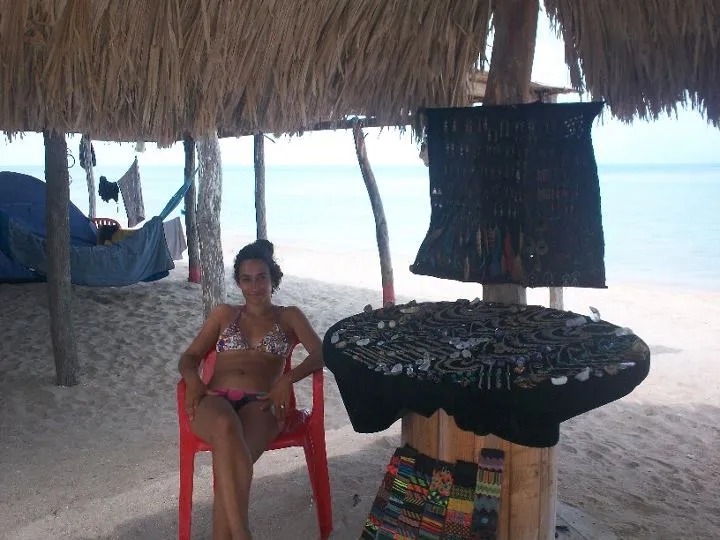
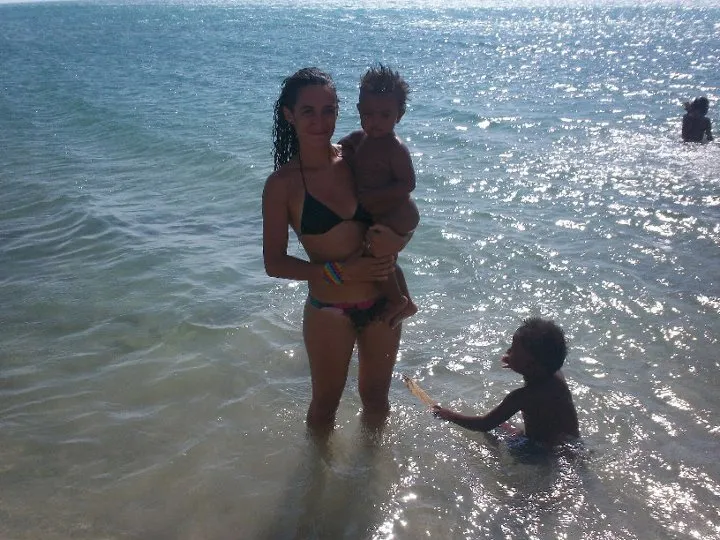
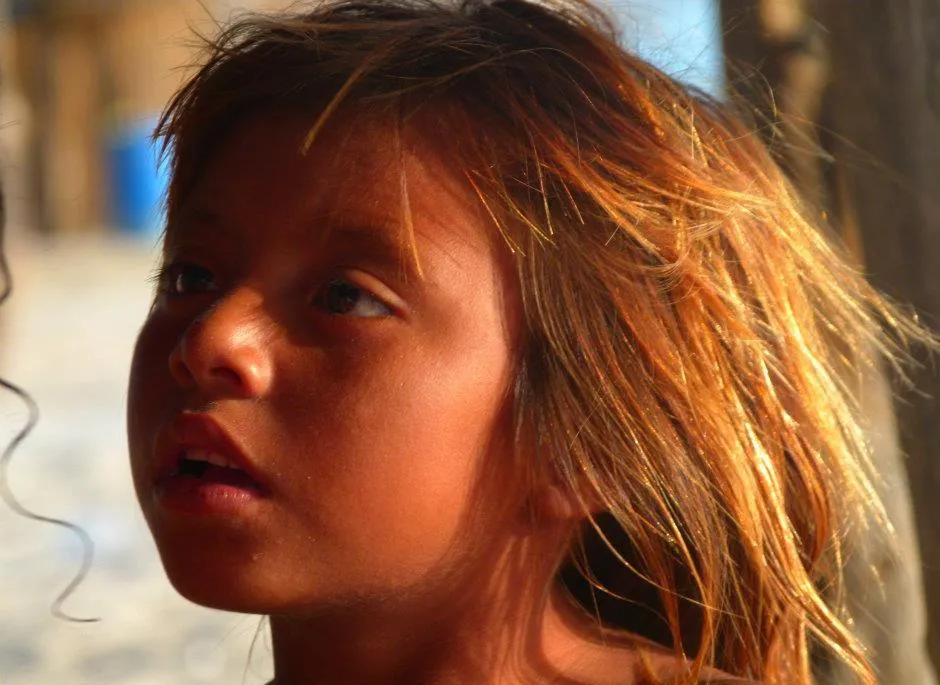
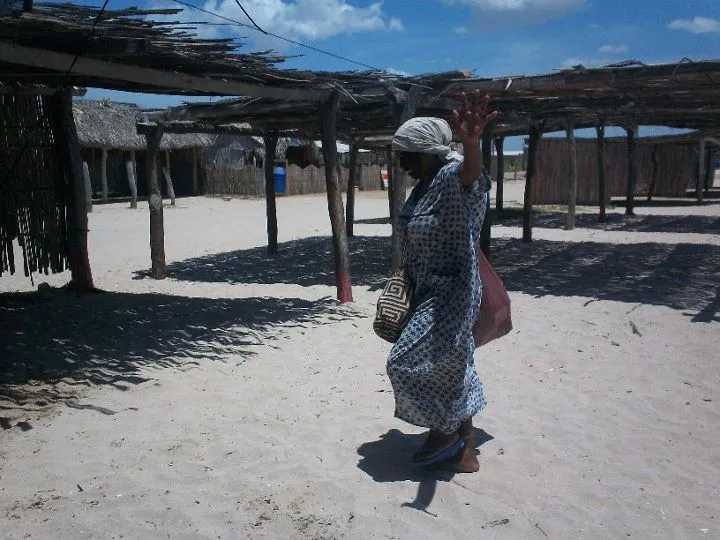
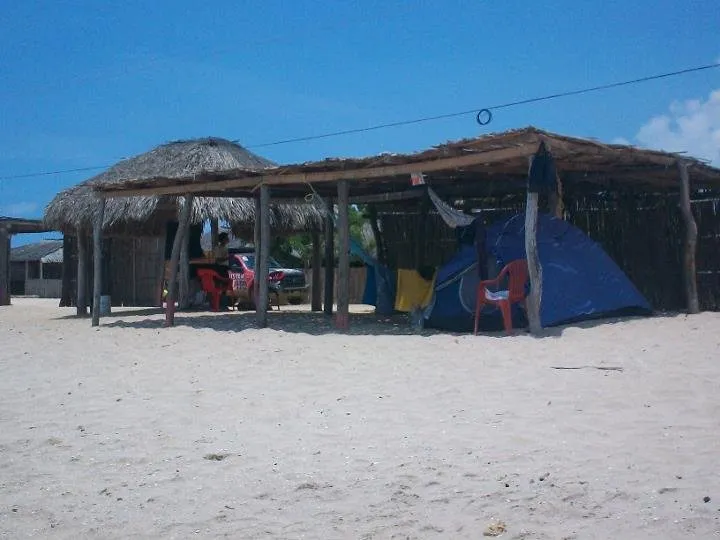


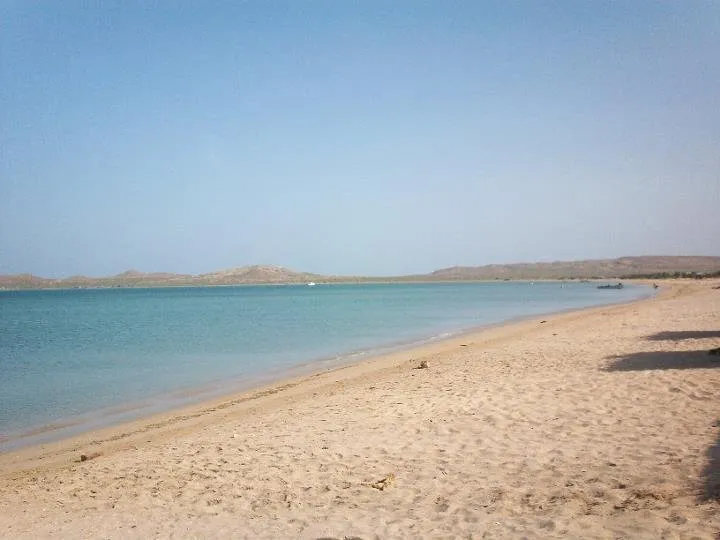
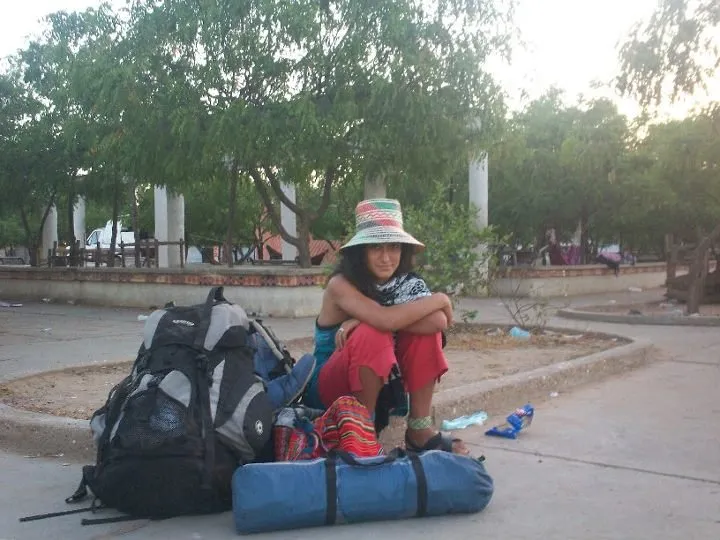
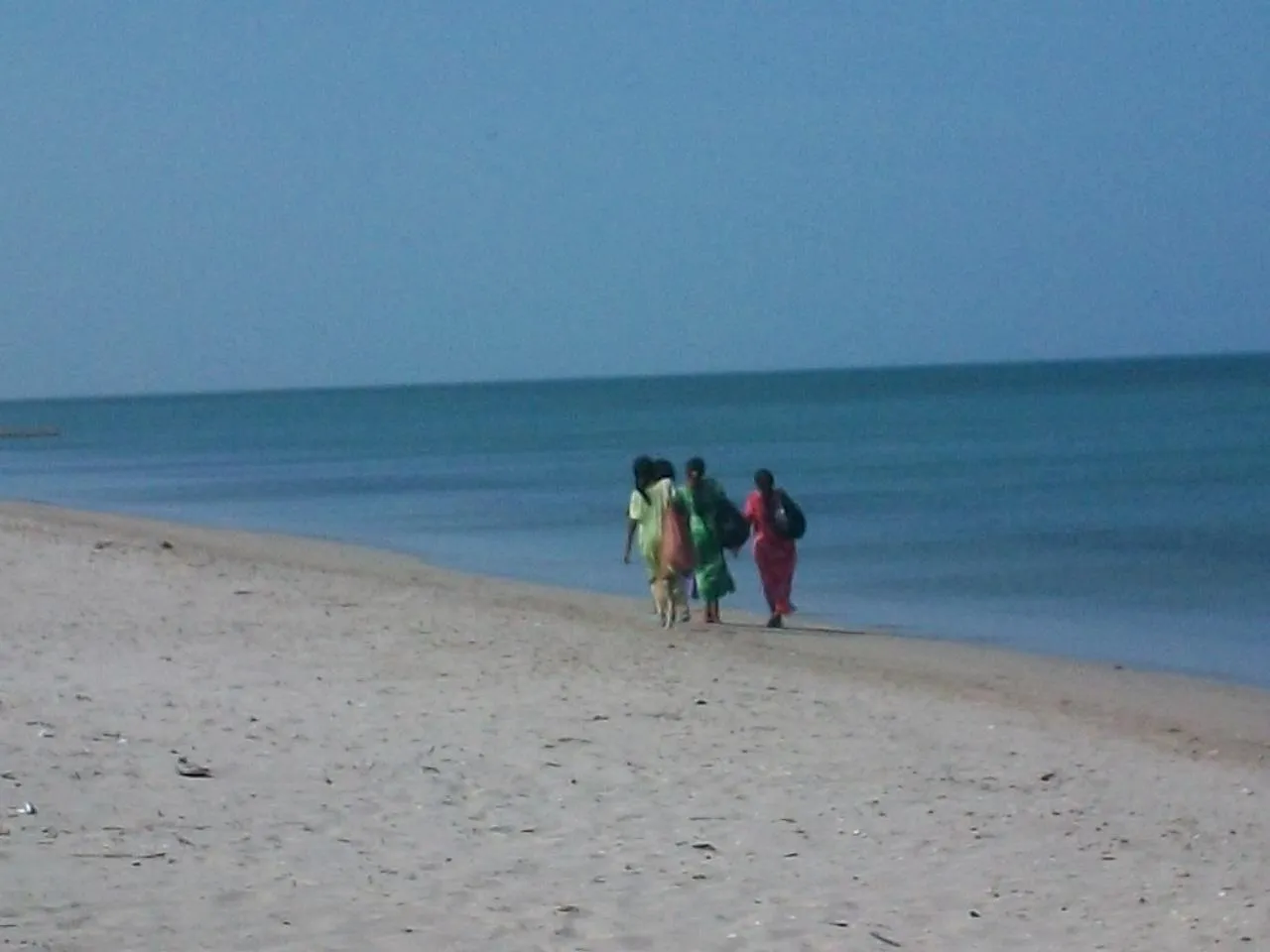

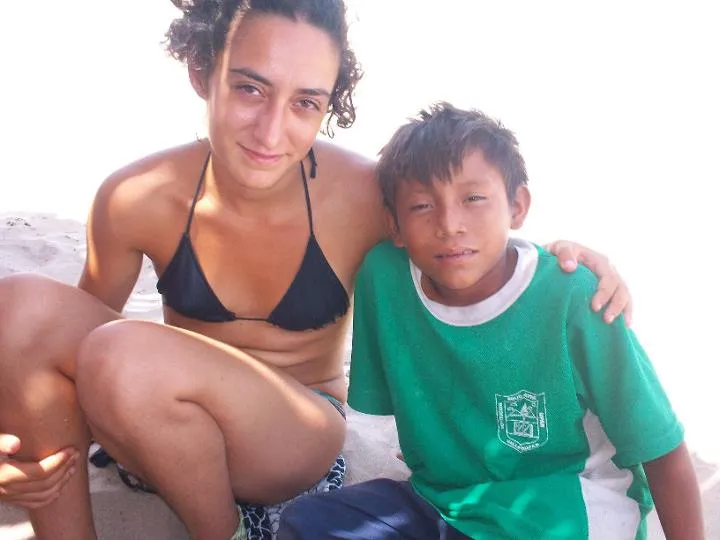
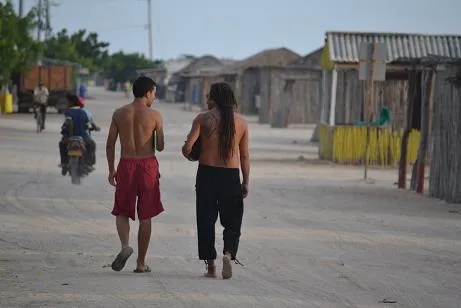
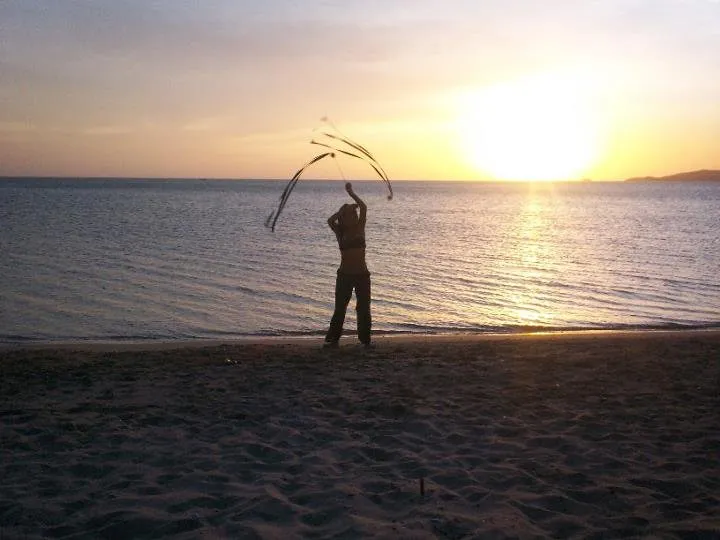

Las fotos fueron tomadas por una camara kodak digital año 2011. La foto de portada camara profesional no es de mi autoria // The photos were taken by a kodak digital camera year 2011. The professional camera cover photo is not my own.
